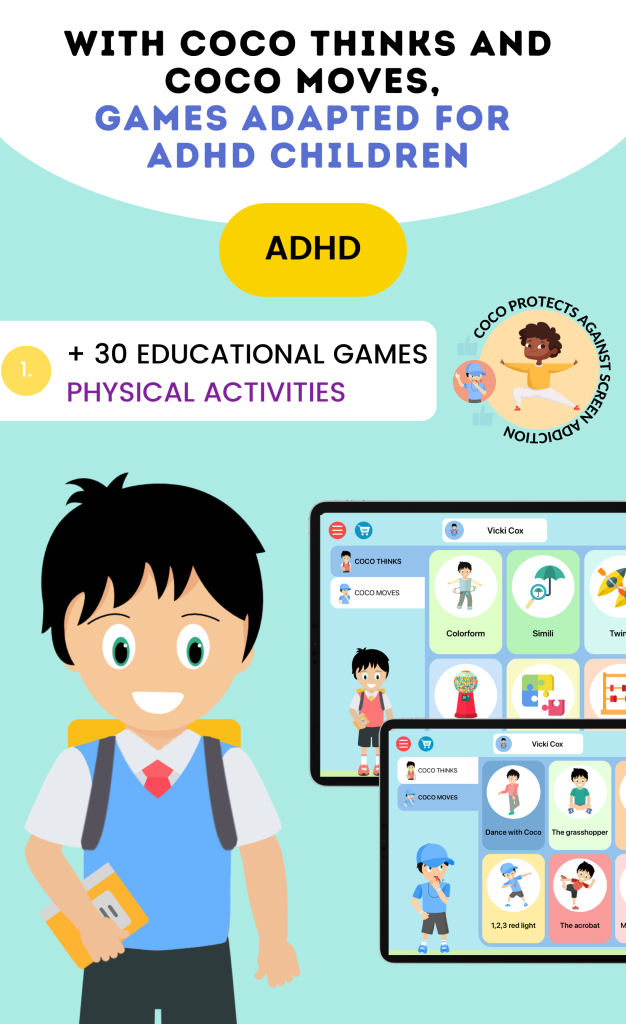The exact cause of ADHD remains unclear, but it is believed to involve genetic, environmental, and neurological factors. Auditory Processing Disorder (APD), on the other hand, refers to a condition where the brain has difficulty processing auditory information. Individuals with APD may hear sounds but struggle to understand or interpret them correctly.
This can lead to challenges in following conversations, distinguishing between similar sounds, or responding appropriately in auditory-rich environments. While ADHD primarily affects attention and behavior, APD specifically targets the auditory system, making it challenging for individuals to process spoken language effectively. Understanding both conditions is crucial for developing effective strategies to support those affected.
The Relationship Between ADHD and Auditory Processing
Research shows a significant overlap between Attention Deficit Hyperactivity Disorder (ADHD) and Auditory Processing Disorder (APD), with many individuals diagnosed with ADHD also exhibiting symptoms of APD. This connection complicates the diagnostic process, as symptoms from each condition can mask or mimic those of the other, making accurate assessment challenging.
Diagnostic Challenges
-
Symptom Similarities: Children with ADHD often display inattentiveness or appear easily distracted, behaviors that can be mistaken for a lack of interest or motivation. However, these behaviors may actually stem from auditory processing difficulties.
-
Misinterpretation: Without careful evaluation, educators or clinicians might overlook APD, attributing all issues solely to ADHD. This can result in incomplete or ineffective interventions.
Impact on Learning and Behavior
-
Compounded Difficulties: A child with ADHD may struggle to maintain focus due to impulsivity and hyperactivity, while concurrent APD can hinder their ability to accurately process spoken information.
-
Communication Barriers: Even when paying attention, a student with APD may miss or misunderstand instructions, leading to confusion and frustration.
-
Academic and Emotional Consequences: These challenges often contribute to academic struggles, behavioral issues, and decreased self-esteem, as the child faces repeated obstacles without adequate support.
Importance of Comprehensive Assessment and Intervention
-
Holistic Evaluation: Recognizing the potential for co-occurring ADHD and APD encourages comprehensive assessments that consider both attention and auditory processing capabilities.
-
Targeted Strategies: Intervention plans must address both disorders simultaneously, combining behavioral supports for ADHD with auditory training or accommodations for APD.
-
Collaborative Approach: Coordination between educators, speech-language pathologists, and healthcare professionals is essential to create effective, individualized support plans.
Understanding the intricate relationship between ADHD and Auditory Processing Disorder is crucial for developing effective interventions. By addressing both attention regulation and auditory processing difficulties, we can better support individuals in overcoming challenges and achieving academic and personal success.
Symptoms of Auditory Processing Disorder in Individuals with ADHD
Auditory Processing Disorder (APD) presents a variety of symptoms that can significantly affect daily functioning, especially when combined with Attention Deficit Hyperactivity Disorder (ADHD). Recognizing these symptoms is critical to providing appropriate support.
Common Symptoms of APD
-
Difficulty Following Verbal Instructions: Individuals may struggle to accurately process and remember spoken directions, particularly if they are complex or delivered quickly.
-
Frequent Requests for Repetition or Clarification: Asking others to repeat information often signals difficulty in processing auditory input the first time.
-
Trouble Distinguishing Similar Sounds: Differentiating between words that sound alike (e.g., “bat” vs. “pat”) can be challenging.
-
Increased Difficulty in Noisy Environments: Background noise often overwhelms the individual’s auditory system, making it hard to focus on relevant sounds or conversations.
Impact on Individuals with ADHD
-
Exacerbated Attention Difficulties: The presence of APD symptoms can worsen the inattentiveness and distractibility commonly associated with ADHD, leading to greater frustration and decreased engagement.
-
Social Interaction Challenges: Misinterpreting verbal cues such as tone, sarcasm, or jokes may cause misunderstandings with peers and hinder the development of social skills.
-
Difficulty in Group Settings: Participating in group discussions or following multiple simultaneous speakers can be overwhelming, leading to withdrawal or confusion.
Emotional and Social Consequences
-
Increased Anxiety and Frustration: Struggling to understand spoken information may cause stress, impacting emotional well-being.
-
Feelings of Isolation: Difficulties in social communication can lead to social withdrawal and a sense of isolation, affecting self-esteem and peer relationships.
Importance of Early Recognition
Early identification of these symptoms by parents, educators, and clinicians is essential to provide timely interventions. Understanding the combined effects of ADHD and APD enables the development of strategies that support both auditory processing and attention challenges, fostering better academic performance and social development.
Strategies for Managing Auditory Processing Difficulties in Individuals with ADHD
Effectively managing auditory processing difficulties in individuals with ADHD requires a comprehensive and personalized approach. Combining environmental modifications, instructional techniques, and technological supports can significantly improve their ability to process information and stay engaged.
Environmental Modifications
-
Minimize Distractions: Arrange seating so the individual is closer to the teacher and away from noisy areas like windows, doors, or high-traffic zones.
-
Create a Quiet Workspace: Provide access to quiet areas or study carrels where background noise is reduced, allowing better focus on auditory input.
Instructional Techniques
-
Use Visual Aids: Complement verbal instructions with written notes, diagrams, or pictures to reinforce understanding and memory retention.
-
Break Down Instructions: Divide complex tasks into smaller, sequential steps to prevent information overload and improve processing.
-
Repeat and Rephrase: Encourage teachers or caregivers to repeat key information and express it in different ways to aid comprehension.
-
Check for Understanding: Regularly pause to ask questions or have the individual paraphrase instructions to ensure clarity.
Assistive Technology
-
FM Systems: Utilize frequency modulation (FM) systems that transmit the speaker’s voice directly to the student’s hearing device or headphones, reducing background noise and improving auditory clarity.
-
Speech-to-Text Tools: Use apps or software that convert spoken language into written text, allowing students to follow along more easily.
-
Noise-Canceling Headphones: Provide headphones to help block out distracting sounds during focused work or study sessions.
Consistent Implementation and Support
-
Collaboration: Educators, caregivers, and specialists should work together to maintain consistency in applying these strategies across environments.
-
Individualized Plans: Tailor strategies to fit the unique strengths and challenges of each individual, adjusting as needed based on progress and feedback.
-
Encourage Self-Advocacy: Teach individuals to communicate their needs and seek accommodations proactively to foster independence.
By integrating these strategies thoughtfully, caregivers and educators can create a supportive learning environment that enhances both auditory processing and attention, enabling individuals with ADHD and auditory processing difficulties to succeed academically and socially.
The Impact of Auditory Processing Difficulties on Academic Performance
Auditory processing difficulties can significantly affect the academic success of students with ADHD, creating multiple challenges that interfere with learning and achievement.
Challenges in Classroom Learning
-
Difficulty Following Lectures: Students may struggle to process and retain spoken information during lessons, making it hard to grasp key concepts.
-
Participation Barriers: Challenges in understanding verbal cues or instructions can limit involvement in class discussions and group activities, reducing opportunities for active learning.
Effects on Assignments and Assessments
-
Misunderstanding Instructions: Inability to accurately process verbal instructions can lead to errors in completing assignments and tests.
-
Time Management Issues: Processing delays may cause students to take longer on tasks, resulting in incomplete work or missed deadlines.
Emotional and Motivational Consequences
-
Lowered Academic Performance: Persistent difficulties often translate into lower grades, which can impact overall academic standing.
-
Decreased Motivation: Repeated struggles may reduce enthusiasm for learning, causing students to disengage.
-
Increased Anxiety and Fear: Awareness of their challenges compared to peers can lead to anxiety about participation and fear of failure.
Cyclical Impact on ADHD Symptoms
-
Exacerbation of Attention Difficulties: The emotional stress and frustration stemming from auditory processing problems can worsen ADHD symptoms, such as inattention and impulsivity.
-
Negative Feedback Loop: Academic setbacks and emotional distress can create a cycle that hinders progress unless addressed through tailored support.
Understanding these impacts is essential for educators and caregivers to develop effective interventions that address both auditory processing challenges and ADHD symptoms. Providing targeted support can help break this cycle, improving academic outcomes and emotional well-being for affected students.
The Role of Therapy and Interventions in Addressing Auditory Processing Difficulties in Individuals with ADHD
Speech-Language Therapy
-
Focuses on improving auditory processing skills such as:
-
Auditory discrimination (distinguishing similar sounds)
-
Auditory memory (retaining and recalling verbal information)
-
Listening comprehension (understanding spoken language)
-
-
Involves structured exercises like:
-
Sound matching and sequencing tasks
-
Repetition and listening games
-
Following multi-step verbal instructions
-
-
Helps individuals become more confident in both academic and social settings by improving their ability to:
-
Follow classroom discussions
-
Respond appropriately in conversations
-
Understand verbal instructions, even in noisy environments
-
Cognitive-Behavioral Therapy (CBT)
-
Addresses emotional challenges related to ADHD and auditory processing difficulties, such as:
-
Anxiety
-
Frustration
-
Low self-esteem
-
-
Provides tools for managing negative thoughts and emotions by:
-
Teaching coping strategies and emotional regulation
-
Developing self-awareness and positive self-talk
-
Helping individuals reframe their difficulties in a more constructive light
-
-
Supports personal development by encouraging independence, resilience, and self-advocacy
Combined and Complementary Approaches
-
Integrating multiple therapies enhances outcomes by addressing both cognitive and emotional needs
-
Often includes collaboration with other support services, such as:
-
Occupational therapy for sensory processing and executive function support
-
Behavioral therapy for attention and impulse control
-
Social skills training to improve peer interactions
-
-
Encourages communication between therapists, teachers, and families to maintain consistency across environments
Assistive Technologies and Tools
-
Useful in enhancing learning and communication, especially in noisy or complex settings
-
Examples include:
-
FM systems to transmit the teacher’s voice directly to the student
-
Visual schedules or written instructions to reinforce spoken language
-
Speech-to-text applications to support reading and writing tasks
-
-
These tools reduce the processing burden and increase engagement and comprehension
Importance of Early and Ongoing Intervention
-
Early identification and intervention can:
-
Prevent long-term academic difficulties
-
Improve classroom engagement
-
Support emotional well-being
-
-
Regular assessments and progress monitoring allow interventions to evolve with the student’s needs
-
Continuous support from educators, therapists, and families helps maintain momentum and celebrate progress
Conclusion
Therapeutic intervention plays a key role in helping individuals with ADHD manage auditory processing challenges. A combination of speech-language therapy, cognitive-behavioral support, assistive technologies, and a collaborative network of professionals ensures a well-rounded approach. By addressing both the cognitive and emotional aspects of these difficulties, we can foster growth, confidence, and lasting success in academic and social environments.
Let me know if you’d like this adapted into a handout, slide presentation, or infographic.
Tips for Parents and Teachers to Support Individuals with ADHD and Auditory Processing Difficulties
Establish Clear and Open Communication
-
Schedule regular check-ins between parents and teachers to share updates on the student’s progress and needs.
-
Create a safe space for the child to express feelings, frustrations, or confusion both at home and in school.
-
Use communication journals or digital platforms to maintain consistent home-school collaboration.
Use Multi-Sensory Teaching Strategies
-
Pair verbal instructions with visual supports such as:
-
Diagrams, charts, and illustrations
-
Written steps on the board or handouts
-
Demonstrations and hands-on activities
-
-
Break complex instructions into smaller, manageable parts and repeat them when necessary.
Build Predictable Routines and Structured Environments
-
Maintain consistent schedules to reduce anxiety caused by unexpected changes.
-
Use visual schedules or checklists to help the student follow daily tasks and transitions.
-
Provide advance notice of changes to routines or assignments.
Implement Positive Reinforcement
-
Acknowledge and reward effort, not just outcomes, to build motivation and confidence.
-
Use tangible rewards, praise, or privilege systems that align with the student’s interests.
-
Set realistic, incremental goals and celebrate progress regularly.
Provide Processing Time and Reduce Distractions
-
Allow extra time for students to respond to questions or complete tasks.
-
Seat the student away from noise sources or use quiet corners to minimize distractions.
-
Encourage the use of noise-canceling headphones or quiet breaks when needed.
Encourage Active Listening and Engagement
-
Teach and model active listening strategies such as:
-
Maintaining eye contact
-
Asking clarifying questions
-
Using “repeat back” methods to confirm understanding
-
-
Prompt students gently if they appear distracted or confused, without drawing negative attention.
Promote Peer Interaction and Support
-
Facilitate small group work or buddy systems to encourage social inclusion.
-
Assign supportive peers who model positive communication and collaboration.
-
Use role-playing or social stories to help students practice conversational and social skills.
Utilize Assistive Tools and Technologies
-
Incorporate assistive listening devices (e.g., FM systems) for clearer auditory input.
-
Provide written summaries of lessons or homework instructions.
-
Allow the use of speech-to-text or text-to-speech apps for reading and writing support.
Engage in Targeted Intervention and Support
-
Collaborate with speech-language pathologists, psychologists, or special educators for personalized strategies.
-
Encourage participation in specialized programs for auditory or language processing development.
-
Support therapy goals at home through consistent reinforcement and practice.
Conclusion
By combining empathy, structure, and collaboration, parents and teachers can create a nurturing and effective support system for individuals with ADHD and auditory processing difficulties. When home and school environments are aligned in their strategies, students are more likely to succeed academically, socially, and emotionally.
The Importance of Early Identification and Intervention for Auditory Processing Difficulties in Individuals with ADHD
Early identification and timely intervention are fundamental to improving the developmental, academic, and emotional outcomes of individuals with ADHD who also experience auditory processing difficulties. Addressing these challenges at an early stage provides a stronger foundation for lifelong learning and well-being.
Key Reasons Why Early Identification is Crucial
-
Prevents Compounded Learning Difficulties
-
Auditory processing challenges can severely impact language development, comprehension, and reading skills.
-
When left unrecognized, these difficulties may lead to more significant academic struggles over time.
-
-
Facilitates Timely Referrals and Assessments
-
Early observation of atypical listening behaviors, difficulty following verbal instructions, or frequent requests for repetition can prompt referrals to audiologists, speech-language pathologists, or educational psychologists.
-
These professionals can conduct comprehensive evaluations to determine whether APD is present alongside ADHD.
-
-
Promotes Tailored Intervention Strategies
-
Once identified, personalized support plans can be created, integrating speech therapy, classroom accommodations, and behavioral strategies.
-
Interventions are more effective when initiated during early developmental windows, as the brain is more responsive to change and new learning.
-
Benefits of Early Intervention
-
Improves Academic Outcomes
-
With proper support, students can better follow lessons, retain auditory information, and participate actively in classroom discussions.
-
Reduces gaps in literacy and comprehension skills that may otherwise persist into later schooling.
-
-
Supports Emotional and Social Development
-
Children who struggle to process auditory information often feel misunderstood or isolated.
-
Intervention helps reduce frustration, boost self-esteem, and build stronger peer relationships by enhancing communication skills.
-
-
Develops Long-Term Coping Mechanisms
-
Early intervention provides children with tools and strategies to manage their difficulties proactively.
-
These may include self-advocacy skills, organizational techniques, and the use of assistive technologies that remain useful into adulthood.
-
-
Enhances Collaboration Between Home and School
-
Early identification encourages stronger collaboration between parents, teachers, and specialists.
-
This shared understanding fosters a consistent and supportive environment across all settings.
-
Steps to Promote Early Identification
-
Monitor Developmental Milestones
-
Track speech, listening, and attention behaviors from an early age.
-
Note patterns such as inattention that persists in quiet settings or misunderstanding of verbal cues.
-
-
Educate Parents and Educators
-
Provide training and resources to help adults recognize early signs of auditory processing difficulties, especially in children already diagnosed with ADHD.
-
Encourage open communication and documentation of observed behaviors.
-
-
Create Access to Screenings and Resources
-
Advocate for regular hearing and processing evaluations in schools and pediatric care.
-
Build partnerships with speech-language pathologists and audiologists for community referrals.
-
Conclusion
By prioritizing early identification and intervention, we can equip children with ADHD and auditory processing difficulties with the tools they need to succeed. These proactive steps not only improve educational outcomes but also foster emotional resilience, confidence, and a sense of empowerment. A timely response can make the difference between ongoing struggle and a pathway to thriving in school and beyond.




